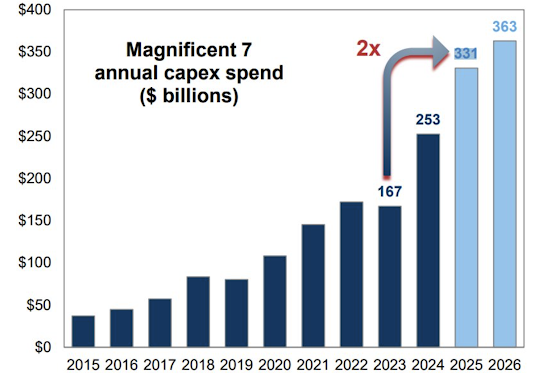This week in charts
Historical market corrections
U.S. vs. global stocks
European vs. U.S. equities
Fund flows to European equities
Value vs. growth indexes
G7 gross domestic product (GDP) by country
Small businesses
Manufacturing production and employment
European defense spending
Investors avoiding the dip
S&P 500 Index returns vs. analyst projections
Investors should be wary of analyst ratings
Analyst ratings on stocks are a regular feature in financial news coverage. Upgrades, downgrades and price target changes can often create volatile one-day price movements and attract investor attention.
However, investors should be wary of these headline-grabbing stock reports from experts at large firms. The long-term investment implications might not be what they expect. In fact, following sell-side analyst advice may lose you money.
My firm analysed the investable information to be gleaned from analyst ratings, changes in ratings and price targets. Is there much value in these? The short answer is — there is not.
The S&P Capital IQ analyst rating summary score for the sell-side analyst recommendations is between one and five and measures how loved or hated a stock is by the sell-side community. We found that the best-performing stocks over the past 25 years are those in the lowest quintile.
In addition, over the past 24 years, if you bought the stocks rated most highly by the sell-side analysts and shorted the stocks with the lowest number of buy ratings, you would have lost money — about 30 per cent cumulatively, with meaningful volatility.
What about change in a data point, not the level of it? That is often more important in equity analysis. A fair follow-up question could be: what if analysts change their minds?
If something is shifting enough to induce a change to an analyst’s rating, that outlook might matter. Hence, we studied the month-over-month change in analyst ratings and found that this metric was not an effective predictor of subsequent return. Over the past 20 years, stocks recently upgraded by analysts did not outperform those with recent downgrades.
In addition to using the S&P Capital IQ score, we used another common institutional investor approach, looking at the buy, hold and sell ratings on Bloomberg. We defined “buy percentage” as the number of analysts with a “buy” recommendation on a stock divided by the total number of analysts covering a stock. We then looked for stocks newly in favour and those “incrementally loved”, as indicated by an increased number of buy ratings, and compared their subsequent stock performance with those with the most month-over-month downgrades.
These “incrementally loved” stocks did beat the incrementally disfavoured ones from 2001 through 2013 but have generated no additional return over the past dozen years. Recently upgraded stocks do not outperform recently downgraded stocks, so looking for changes in rating is also not a fruitful investment discipline.
As for price targets, there is a notion that if the analysts see tremendous upside to a stock, they set price targets way above where a stock is trading as a signal of their confidence that the security will appreciate. Should investors forget about ratings and changes in them, instead of just looking for stocks forecast to have big gains?
That is also not a good strategy. Stocks with lots of “upside” from the current price to the median price target might be perceived as ones where analysts are bullish. But they are often stocks that analysts had been previously too bullish as indicated by bad price momentum.
The outlook for a stock that has been down recently can be meaningfully different for one trading at highs, even if they both have lofty price targets set by analysts. Stocks with high price targets performed best from 2009 to 2016, but the signal has diminished over the past decade.
We did find modest value in the volatility of the price targets for an individual stock. Companies with the lowest standard deviation around their analyst price targets have tended to outperform those with high variability in targets. However, the metric peaked in its efficacy in September of 2022 and has not been of much use since.
But overall, relying on analyst ratings and rating changes has not been a good strategy historically — and is not today. Sell-side analysts, of course, offer insightful original industry research and quantitative analysis that is valuable to investors. But we would suggest looking beyond the eye-catching ratings and price targets.
This week’s fun finds
Turn on the water works: why emotion fuels creative brilliance
The spark of an idea is often celebrated as the ultimate defining moment for creativity. It’s the spark from which the artwork takes shape – whether it’s a painting, building or 30-second spot. But actually, the ‘spark’ is the culmination of a much deeper, more emotional process that begins long before. Creativity stems from emotions: the desire to create ‘something’, the exhilaration of possibility and the anticipation of bringing it to life.
In today’s creative climate, where commercial demands often take precedence, emotional connections can be overlooked. In the battle for attention, the process of creativity has become increasingly corporate. Business strategies and KPIs are rooted in clinical reasoning – an idea is deemed viable if supported by data and analysis. By design, creativity should consider audiences closely, investing in research and insights, but also consider emotion’s role in this process. A truly great, memorable, successful project, lies in audience connection. It’s the universal truth our industry is built upon. Lately, we’ve let the heart lose out to the head.























































